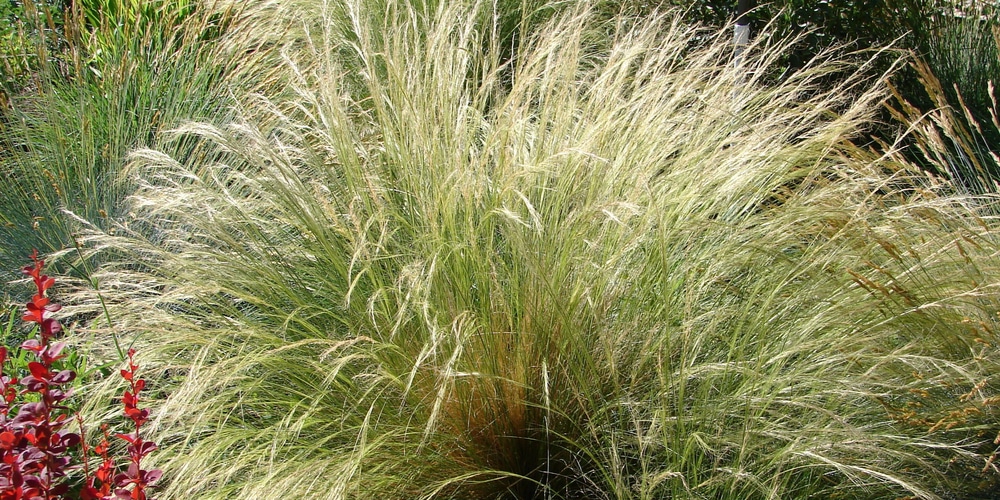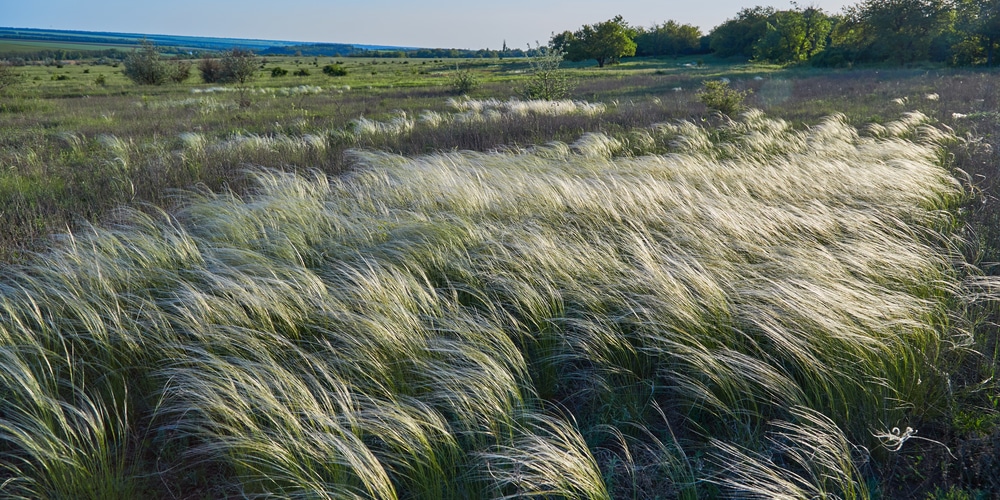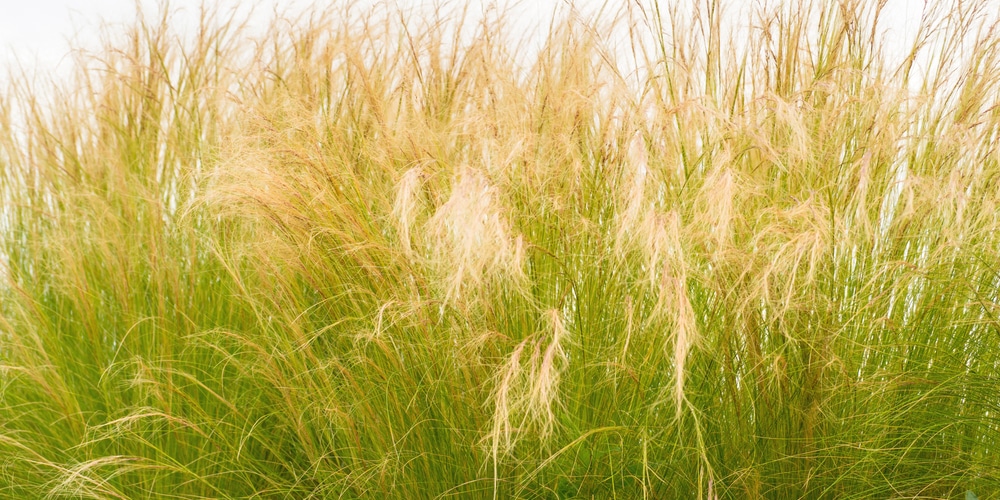Adding ornamental grasses to your yard is an excellent way to add texture and volume. Plus, they will improve the overall look of your garden. There are several species of these types of grasses, meaning you should have no issues finding one that suits your needs and taste.

Among them, the Mexican feather grass is a popular choice. This plant adds an elegant touch to any landscape and will gracefully sway with the wind. And, in the spring and summer, it will delight you with gorgeous feathery blooms.
Besides the aesthetic appeal, Mexican feather grass is relatively easy to grow (when you know what it needs). But what do you need to know about Mexican feather grass spacing?
In essence, how can you make the most out of this ornamental plant? Keep reading if you want to learn this (and more) about the subject.
Mexican Feather Grass: All You Should Know About It
The Mexican feather might be an excellent option for people looking for hardy and versatile ornamental grass. However, you should be aware that it can come with some drawbacks. For instance, this grass is invasive in some regions.
So, if you don’t keep it under control, it might take over your garden. To prevent this, you must give your plant regular maintenance. Indeed, you’ll have to remove the seedlings and even deadhead the flowers to control their spread.
With that said, we recommend planting this grass in the spring. Also, ensure you locate it under the sun to get the most out of it. While Mexican feather grass will also survive in partial shade, it will give you the best texture under the direct sun.
Usually, this grass isn’t susceptible to diseases or infections. Plus, it seems to be resistant to deer and rabbits. Still, to prevent issues, you must plant it in a loamy substrate with excellent drainage. Don’t worry too much about watering: once established, your Mexican feather grass isn’t a heavy feeder.
How Far Apart Should You Space Mexican Feather Grass Plants?
Now that you know more about this plant species, you may wonder what you can do if you want to use it as a hedge or border. Remember that this ornamental plant will grow in clumps up to 24 inches tall.
If you need to plant more than one specimen, we recommend spacing them at least 24 inches apart. Doing so will ensure your plants get adequate airflow and give them all the room they need to spread out. Also, it will reduce the appearance of pests and diseases, which always comes in handy.
Of course, you can mix them with other flowering annuals to “spice up” your borders. Place this ornamental grass at the center of the composition for a more dramatic effect. However, ensure you keep your Mexican feather plant under control: if you don’t, they might harm the other species you have around.
Don’t forget to check whether the Mexican feather grass is invasive in your region. While this plant is native to North America (including northern Mexico), it is a weed in California, where it is also a fire hazard, and in other parts of the United States.
Our Tips For Growing Mexican Feather Grass
Besides what we said in the previous sections, there are other tips you may need when adding this ornamental grass to your lawn. For instance, Mexican feather grass doesn’t necessarily need pruning.
However, trimming dead flowers and eliminating overgrown stems will save you from plenty of issues during the following season. Don’t forget to use sterile shears and adequately dispose of all the remainings to prevent the plant from reseeding.
You shouldn’t fertilize your Mexican feather grass. Instead, ensure you plant it in a suitable climate (and adequate soil): under the ideal growing conditions, it will adapt to any environment.
However, it might lose its color during the summer. But don’t worry about that: it is the plant’s natural reaction to the hot temperatures.
If you don’t have much space in your garden, you can grow this ornamental grass in containers. You can also experiment with mixed planting (try adding it to a pot that contains other plants). Make sure to choose a location that gets full sun during the day. Also, avoid overwatering your plant when growing it inside a container.

